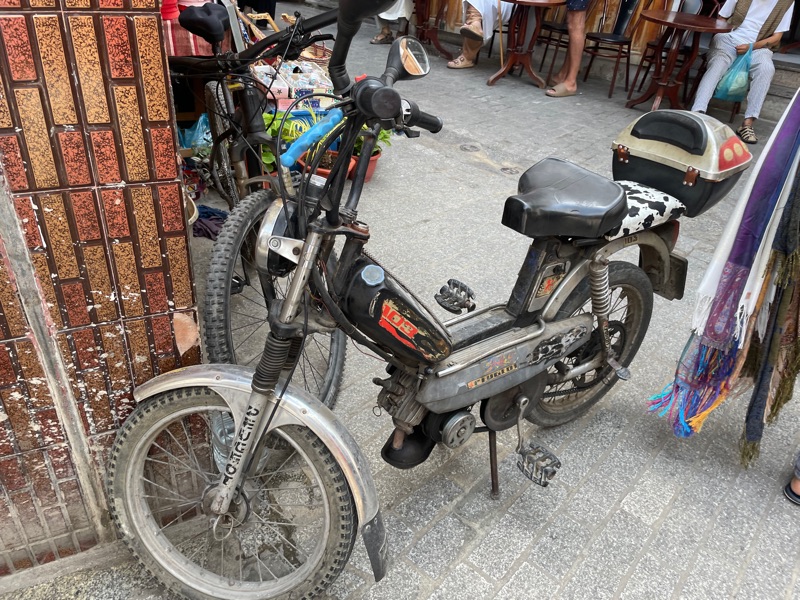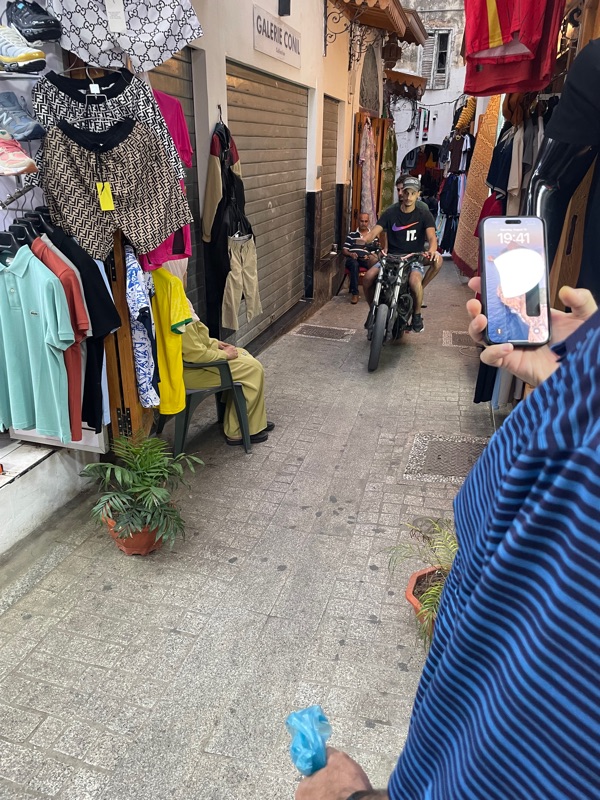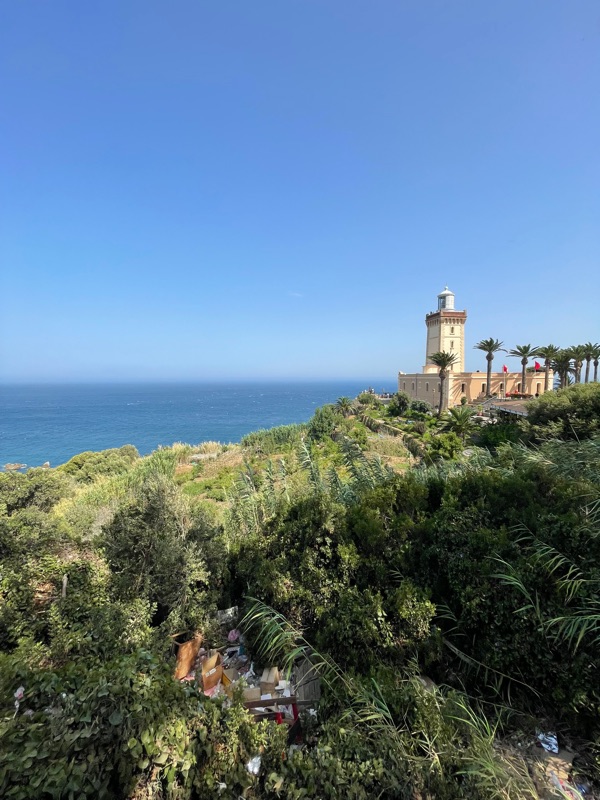 However you like to say it, this city on the tip of Africa, the Mediterranean, and the Atlantic ocean certainly has a special culture, but it may not be like you’ve seen in Indiana Jones and Hollywood films. I certainly was surprised when I entered the city how real some of the caricatures were, and also how fake some of the things from movies are. I won’t go too much into the history of Morocco but I’ll just say some of things I noticed.
However you like to say it, this city on the tip of Africa, the Mediterranean, and the Atlantic ocean certainly has a special culture, but it may not be like you’ve seen in Indiana Jones and Hollywood films. I certainly was surprised when I entered the city how real some of the caricatures were, and also how fake some of the things from movies are. I won’t go too much into the history of Morocco but I’ll just say some of things I noticed.
First thing I noticed was the traffic flow streets sometimes go two ways in impossibly inclined roads. Gates built for men and horses don’t fit modern cars very well so once you enter certain districts you have to park and walk. This is why so many people own a motorcycle or electric scooters. The motorcycles own the road around here though. They push the absolute limit of “safe” driving. Also I cannot over exaggerate how much the horn is used. What we are used to in america is the horn being an accessory, over in Morocco because there is zero road signs or stop lights and pedestrians everywhere, the horn seems to be more important than gears. 
Also something worth noting is that there is not cruising here: you are either on the gas or brake at all times because of the steep hills.
Another thing you may have to get used to is not having A/C but that is something very easy to overcome due to the temperate climate.
Something that may take longer to adapt to is the air quality or lack of it, walk anywhere in the streets and you will smell like the fish market no matter where you are. You do not want to know what the fish market smells like, let’s just say It’s something like 100000 dead fish. I can’t tell you enough, I’ve never thought that AQI (Air quality index) would ever be something I would think about, but over here it may become an important part of your life.
Something that could take even longer to adapt to is that there are no trash cans. Did you read that correctly? No trash cans! It’s very interesting indeed you can walk a whole district without trash cans. The only thing that picks up trash is these people in blue suits that have garbage grabbers and trash bags, but there is still trash all over. people use the sewer as a trash can a lot. Look at this picture for example:

Great view of where the Mediterranean and Atlantic oceans meet, but there is trash all over.
Now for some unexpected and interesting things.
There are three official languages in Morocco: Arabic, French, and Spanish. Most surprisingly to me, a large majority of the people know enough to get by in 4 languages or more: Arabic, French, Spanish, English, and sometimes Berber, which is spoken by some natives here, meaning that we can communicate better here than is Spain.
Berber was named by the Romans because it basically meant gibberish in Latin; they couldn’t understand it. Berber is not just a language, it is also a style and culture. Berber designs in Morocco can be identified if you look for many colors, like muslim designs but bolder.
There two main religions here: Islam, and Jewish. Our tour guide explained to us today that you can tell what religion the house is because if it has a rectangular door it is muslim but if it has a circular top of the door and there is a david star or there are letters on it, then it is Jewish. Another way to tell is that Jewish areas are often painted blue while muslim areas are painted green sometimes. You will usually know when the muslims are praying because kind of like church bells, they will sing into loud speakers on the top of the mosque. They do this five times a day but it is only required to go to the mosque on Friday. Muslims like to come to Morocco from Saudi Arabia for vacation because it is legal for them to drink alcohol and have other freedoms here.
After the muslims pray, they eat couscous. The Moroccan cuisine consists of mostly just couscous, a dish called tajine, and salads. They also eat a lot of interesting bread products and vegetables.
In most places the special drink is mint tea. This sweet Moroccan special is always served hot with fresh mint leaves.
Something you may have expected but that I did not know what to expect is that most people seem to have cell phones. Since a lot of people make a living from shops in the streets you can see a lot of people on their phones watching fútbol or just on social media while they keep watch over their store.
The prices really depend on where you shop, for example, we bought everything that we ate at the Airbnb for 20 dirham, but if you eat out you can spend as much as 450 dirham for a table for 2. One euro is 10 dirham which means that 1 dirham is like ten cents. I really like the idea of 10 cents being the lowest transactional rate because no one really uses under 10 cents anymore.
The rooftop terrace wasn’t just an accident that we have it. Almost all old town buildings have access to a rooftop view. They are also very close together and it was said by our tour guide that women will often stay near the top of the house and when they are on the roof they can talk to their neighbors.
It is worth noting that is tanger there are two main parts to the old town: the Medina, and the Kasbah. The Medina is where you shop and many people live there. The Kasbah (meaning fortress) is exactly that. That is the area very closely surrounded by the walls that the Portuguese people built is the 16th century.
So many people were born here and have been on these streets all their lives so everyone knows each other and so do the cats.
Tanger, I am sad to say, is not a place I could live. I think it was a great experience and a culturing place but Sevilla felt much more homey with its A/C, 2 stories, a huge cathedral within walking distance, and trash cans. First time in Africa so I don’t have much base of experience. Let’s see what Granada is like!



Great summary of our experiences in Tangier. While I’m glad we came here, I’m also glad that we had a short stay, saw the main attractions, and are now heading back to Spain. I think this will help us really appreciate Spain that much more. Looking forward to Granada!
ReplyDelete